Best Rowing Gloves
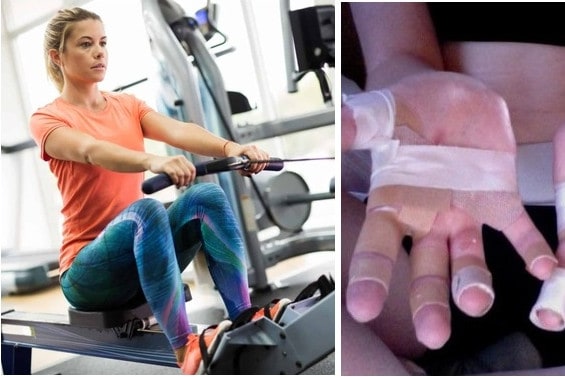
So you think you’re tough because you don’t wear rowing gloves!?
Well you could be hurting your performance!
The best rowing machine gloves will protect against painful blisters and allow you to train at your best.
Blisters are an inevitable part of rowing and something we all must deal with.
They occur for a number of reasons. Such as being your first time rowing, or you haven’t rowed in a long time, or maybe you increased your workout times.
Regardless of the reason for getting rowing blisters, you must learn how to deal with them.
In this article I will touch on preventing blisters, why some people wear rowing gloves, how to measure your hand, types of rowing gloves, and the best rowing glove in each category.
Many rowers have different opinions on how to deal with blisters and there is an ongoing debate. Some people say to tough it out and let callouses form, others say to wear gloves, and some say your grip is the only problem.
I hope to try to shed some light on these issues to novice rowers. I am no expert on blisters but I have dealt with them in the past using my Concept2 Rower. So I know a little more than the first timer and how to deal with them.
Opinions will also differ between blisters from an indoor rower and blister from sculling. I understand the difference between both and hope that this article will help each rower.
This article will lean slightly towards helping indoor rowers find the best rowing machine gloves to solve their issue.
| Rowing Gloves | Description | Check Price |
|---|---|---|
 | Fingerless Rowing Gloves. Perfect Fitness Gloves for Rowing Machine, Exercise Bike, Weight Lifting, Cycling, Training, Gym. Workout Gloves for Men and Women. M (Fits 7.5"-8") | Check Price |
 | Atercel Workout Gloves for Men and Women, Exercise Gloves for Weight Lifting, Cycling, Gym, Training, Breathable and Snug fit (Black, M) | Check Price |
 | Rowing Gloves by Hornet Watersports – Ideal for Indoor Rowing, Sculling, Kayak, SUP, Outrigger Canoe, Dragon Boat and Other Watersports (L (Fits 8"-8.5")) | Check Price |
 | Vinsguir Workout Gloves for Men and Women, Fingerless Weight Lifting Gloves for Exercise, Lightweight Breathable Gym Gloves for Weightlifting, Fitness, Training, Climbing, Cycling and Rowing | Check Price |
 | Contraband Pink Label 5297 Womens Design Series Leopard Print Lifting & Rowing Gloves (Pair) - Lightweight Vegan Medium Padded Microfiber Amara Leather w/Griplock Silicone (Charcoal Gray, Large) | Check Price |
How to Prevent Blisters (In Addition to Rowing Gloves)
Preventing blisters should be your first line of defense. Many times blisters can be easily avoided if we knew what caused them or how to tell when one is forming.
In my opinion, blisters form due to three reasons:
- Improper grip
- Moisture and sweat on the handle
- Increased training time
Train More to Condition the Hands
When you begin rowing, your hands will not be used to gripping the handle or rubbing against an object repeatedly for long periods of time. This sudden change in activity will cause your hands to blister because they did not get the chance to form a callous.
Eventually when your blisters heal, your hands will begin to form callouses and be tough enough to endure rowing. Maybe even as tough as Colin Angus in this picture!

The best way to avoid blisters is to slowly increase your rowing time to allow your hands to adjust to the new activity.
However, if you are impatient, then gloves can allow you to row longer without forming painful blisters.
You should row without gloves on shorter rows to allow your hands to form callouses. If you do not want callouses at all, then I recommend always wearing gloves for rowing.
Manage Palm Moisture and Sweat
Moisture on your hands and handle from sweat can lead to your hands blistering faster. This excess moisture causes additional friction and increases the likelihood of getting a blister.
There are a few things you can do to try to avoid this problem.
First, you can wear wrist bands to catch any sweat that is running down your arms to your hands. My forearms seem to sweat a lot and most of the moisture on my rowing handle comes from my forearm sweat.
Stopping periodically to wipe the sweat away is also a solution, although it can be very annoying.
Second, wrapping a small washcloth around the handle can help. This is great for short rows but on extended rows it can become irritating.
Third, wear gloves. Rowing gloves can negate the excess friction caused by sweating and prevent blisters.
Use the Correct Grip
Having the wrong grip can cause you to have blisters as well as fatigue more quickly. You should not have a very strong grip on the handle, but instead you should grab it loosely or relaxed.
However, understand that there is a happy medium between death grip and flimsy grip. If your grip is usually fatigued during a row, then you may be gripping the handle too tight.
Blisters on your palms are also an indicator that you are probably using an improper grip. Blisters should form more on the grips of your fingers in-between the knuckles and the upper palm.
When gripping the handle try to focus on having a relaxed grip. Your fingers should form a hook and this “hook” should pull the handle. Your thumb should also be wrapped around the bottom of the handle and your middle knuckle should be pointing forward at your monitor.
Also look to make sure your wrists are flat. I’ve heard of some rowers using a rubber band and popsicle stick to make sure they are keeping their wrists flat.
Lastly, do not wear any jewelry. Jewelry can cause your grip to be different and your skin to fold over, which will cause blisters.
Why Wear Rowing Gloves?
Many rowers will debate with themselves about why they should wear gloves on a rowing machine.
Some people may feel embarrassed that they aren’t tough enough to row without them or may succumb to the peer pressure of other rowers who say you shouldn’t wear indoor rowing gloves.
The truth is there are a lot of reasons why you should wear rowing machine gloves. Below are the top 7 reasons why to wear them.
Top 7 Reasons to Wear Rowing Gloves
- Prevent blisters from forming– A lot of people don’t want blisters to form when they first start rowing or when they increase their workout time. This is perfectly OK.
- Prevent callouses from forming– Many rowers just don’t want callouses because of the look, feel, their occupation, or whatever the reason. You will hear many rowers say that you need callouses to protect your hands from blisters. Well if you don’t want either you can wear gloves for rowing.
- Blisters are preventing you from rowing– If you have blisters and they are in the process of healing, then you need to protect them while rowing. Wearing gloves can allow you to heal these blisters properly without causing more damage. Just remember to keep your rowing gloves clean to avoid any infections!!
- Ability to row longer– Many rowers who first start out or have taken a break from rowing need gloves to be able to row for long periods of time. If you don’t want to wait for your hands to form callouses then indoor rowing gloves may be for you.
- Sweaty palms– If sweat is causing your hands to slip on the handle and cause excess friction, then you may want to try a pair of gloves for rowing.
- Slowly form callouses– If you want callouses but don’t want to “slowly” row into them, then you can selectively use a pair of gloves. Just wear gloves on long rows to prevent blisters and don’t wear gloves on shorter rows to form callouses.
- Rowing handle is too big– Sometimes the handle on rowing machines is just too big for the rower. This causes them to have an awkward grip that can lead to blisters. Having a proper rowing machine glove can fix this problem.
So as you can see there are a lot of reasons to wear rowing machine gloves!
How to Measure Your Hand
Measuring your hand properly for gloves is the most important step!
If your gloves do not fit properly then they can actually cause you to form blisters. The extra material on big gloves can fold and cause excess friction against one area of your hand.
Below are the steps to measuring your hand properly for gloves:
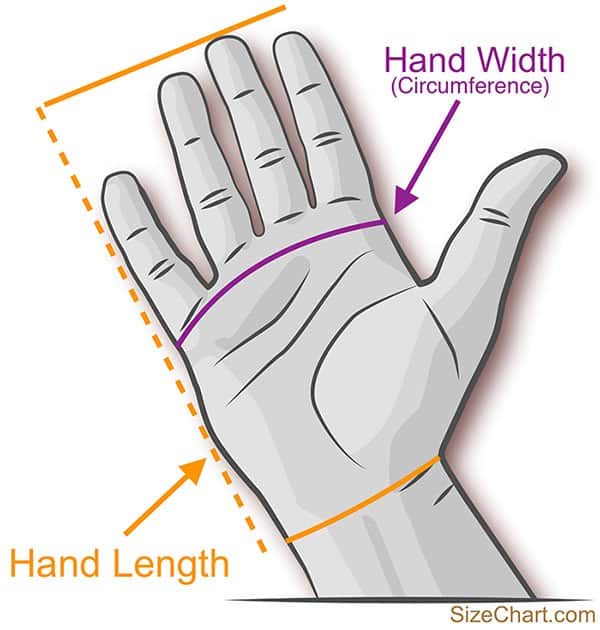
- Take your hand, palm facing up, and outstretch your fingers.
- Measure the widest part of your palm. (Some gloves will ask for the circumference of your hand. If so, measure the full circle around your hand. You can use a piece of string and then hold it up to a tape measure).
- Try to gauge how thick your hands are compared to the average person.
- If you are on the border of 2 sizes but you feel you have thick hands then pick the larger size.
- Always try to check the manufacturer website for sizing instructions. Not all companies use the same measurements.
Here is a great video to help understand how to measure your hand for a glove.
Types of Rowing Gloves
There are a lot of different styles of gloves on the market and you can even use gloves that are made for different sports like mountain biking or kayaking.
I break the different styles into three groups. Each have their own pros and cons but all will help prevent blisters. It is really just what type of style you are comfortable with.
Gloves
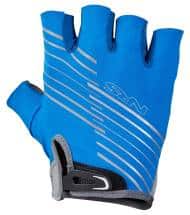
Pads
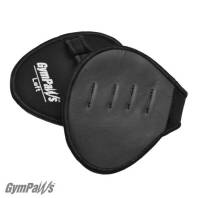
Grips
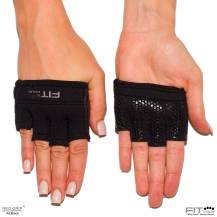
Gloves
Your basic run of the mill workout gloves designed to be more rowing specific. These gloves are great for all types of workouts.
They should be no more than 3/4 finger and should be made of breathable material. You do not want thick, leather gloves that are going to make your hands sweat.
Pads
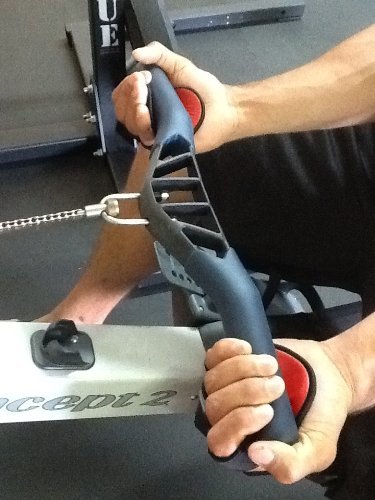
Rowing pads are an interesting concept that I really like for indoor rowers. They are easy to put on, allow your hand to breath, and protect only the part of the hand that needs protecting.
The only downfall is that they are not as fitted and can move around a little. Plus, they are thicker than gloves.
Grips
Rowing grips are sort of a hybrid between gloves and pads. They are very minimal and only protect the part of your hand that gets blisters.
They are nice because they allow your hand to breathe but you can also do other workouts while wearing them.
The cons are that they do not protect the entire hand. If you tend to get blisters on your palms or upper finger then the grips may be the wrong choice.
Best Rowing Machine Gloves
Atercel Workout Gloves

- The stretchy material ensures an adequate fit to prevent blisters from forming.
- Half-fingered, ergonomic palm design for max grip and comfort.
- Palm design leverages muscle direction to minimize movement that otherwise leads to callus formation.
- Lightweight, breathable material to improve flexibility.
- Pull-loop system for easy removal.
NRS Boater Gloves

- Comfortable half-fingered design
- Men’s and Women’s
- Lightweight
- Durable
- Fast drying
Best Rowing Machine Hand Pads
Gym Paws

Unlike some of the other options mentioned, these are made of leather.
I like them because they’re lightweight, easy-to-use, and you don’t have to worry about sizing (one size fits all).
Neo Grip Callus Guard Fitness Gloves

These are lightweight, offer good mobility, and are more durable than they look.
The material holds up well and along with the slim design allows for good air circulation. This, of course, lessens the amount of moisture which should help prevent irritation.
The Hybrid Option: 2K Fit Rowing Machine Gloves

These rowing gloves are made by rowers for rowers. They’re lightweight, durable, and offer the benefits of traditional rowing gloves as well as pads and pads/grips.
These are my top 4 pairs of rowing machine gloves. There are a ton of gloves out there that all have their own little differences. Feel free to use this article as a guideline for what type of glove you may like and find the glove that best fits your needs.
As always, please leave any questions in the comment section below!

Rowing Machine King Founder and Author.






do regulations forbid gloves ?
David,
To my knowledge regulation does not forbid gloves. You do not see gloves worn a lot because of two reasons.
1. Wearing gloves is seen as a sign of weakness and not being tough.
2. Many people believe wearing gloves is disadvantageous because it can cause flaws in your technique by not being able to get a real feel for the oar on water.
Most rowing races are also short distances that would not cause a ton of wear and tear on your hands. Gloves would be more suitable to keeps hands safe when putting in a lot of hours training. You will see a lot of rowers with tape on some fingers and on very long distance rows like the Talisker Whiskey Challenge you will see rowers with some form of protection on the oars.
I hope this helped and if any other readers have input please share! :)
I want to get my grand-son rowing gloves for Christmas.
What are the best for keeping his hands warm?
He rows in North of Scotland and it can be very cold, especially from wind chill.
Hi!
The gloves listed here are for rowing machines obviously so they won’t be a good choice. He will need what’s called “Pogies”.
These will allow his hands to grip the oar but protect them from the cold wind and water. I would search for “Rowing or Sculling Pogies” in your area.
Here is an example of a site that sells them and what they look like (Rowing Pogies)
Good luck!
I’m looking to make a product for rowers so they can have warm hands and so that they don’t lose any of the connection between them and the oar. My hope is that I will be able to make a glove kinda like the hybrid glove but with some kind of reusable heating system implemented.
Any suggestions into what I could do?
Hi Nicolas,
Thanks for the comment but I’m not sure what type of feedback to give as I’m not very experience with OTW rowing. Hopefully some readers can provide some useful tips :)
I have a somewhat unique situation…I have webbed fingers on my left hand (middle and ring finger, up to the middle knuckle) which prevents me from wearing any gloves. I’ve looked into the popular brands and styles you’ve listed, but am weary of buying something online, and it being useless for one of my hands. Do you have any recommendations that doesn’t require all fingers to go into separate holes… Maybe with just a strap around the hand? Or a brand that will work with those “finger straps” being unused entirely, or cut off?
Hi Amanda,
You should check out this Nike Grip for exercising.
There may be other similar grips but I think this would be your best bet
Hi Edwin. Nice article. The link for the recommended products at the end just seem to link back to the article for me. Thought you might like to know,
Andy
Thanks for pointing that out Andy! I’ve fixed the issue.
Hi, I tend to sweat a lot and after amount 4-5 minutes of consistent rowing, the oar is usually slipping out of my hands. This then tends to negatively effect the quality of my rowing because I can’t feather the blade well. This is true when I both sweep row and scull. I don’t really have a big problem with blisters. The biggest issue for me is the gripping when I start to sweat. What do you recommend? Thank you.
Hi Vik! I think this option might be best for sweaty hands. They also have some different options on their website here.
I’m considering weightlifting hooks for rowing (various reasons I won’t go into here).
This isn’t for competitive rowing; just my machine at home. The aim is to remove stress on the hand and transfer/distrubute more of the load to the wrist and forearm.
Any thoughts?